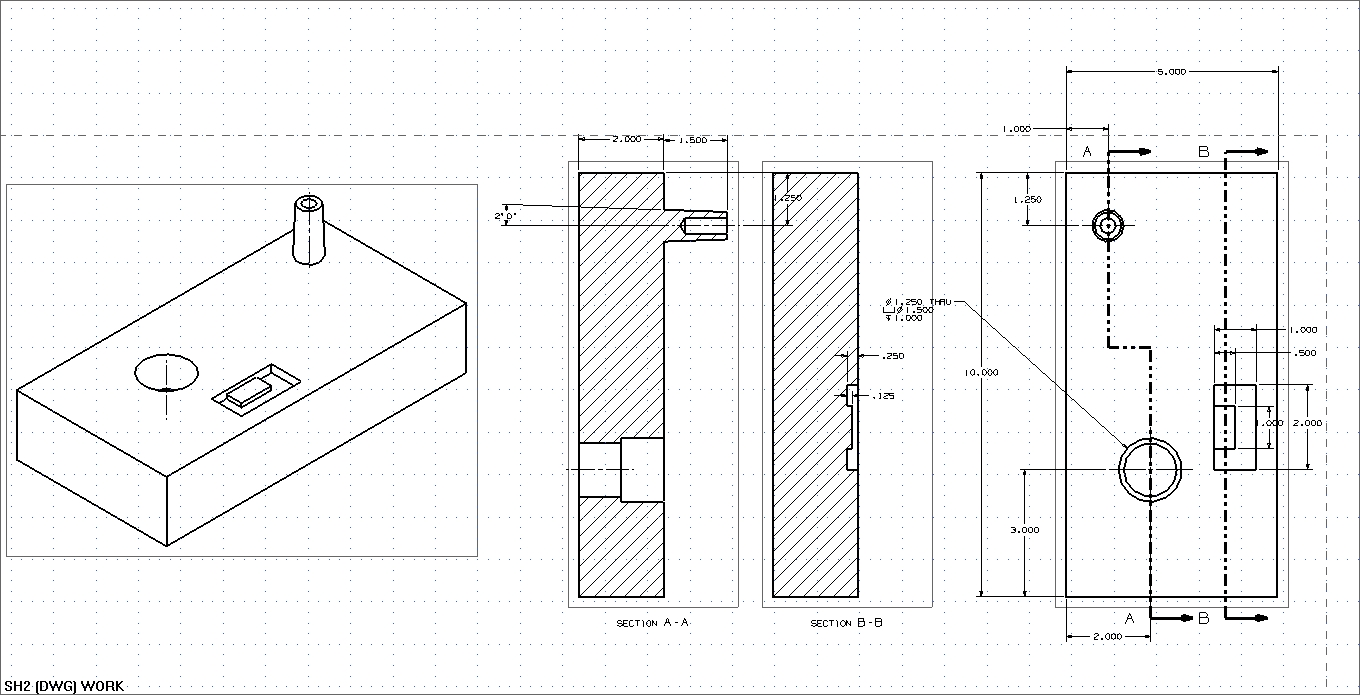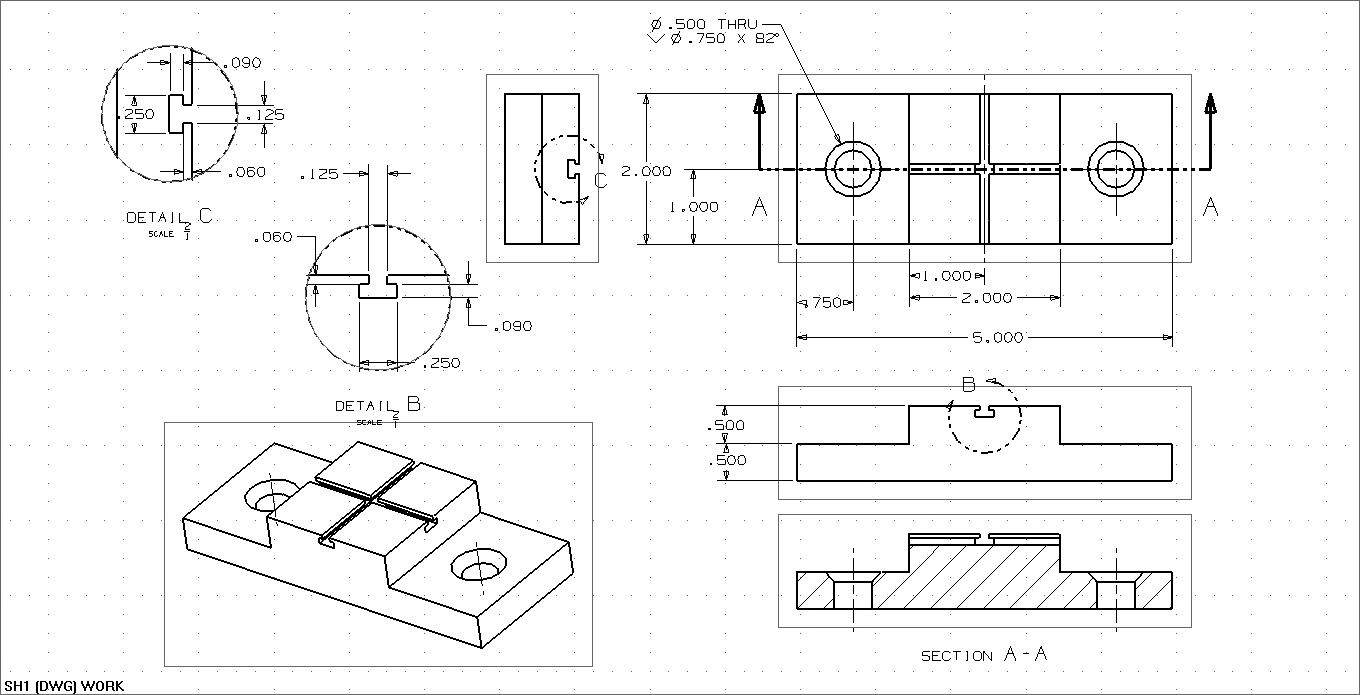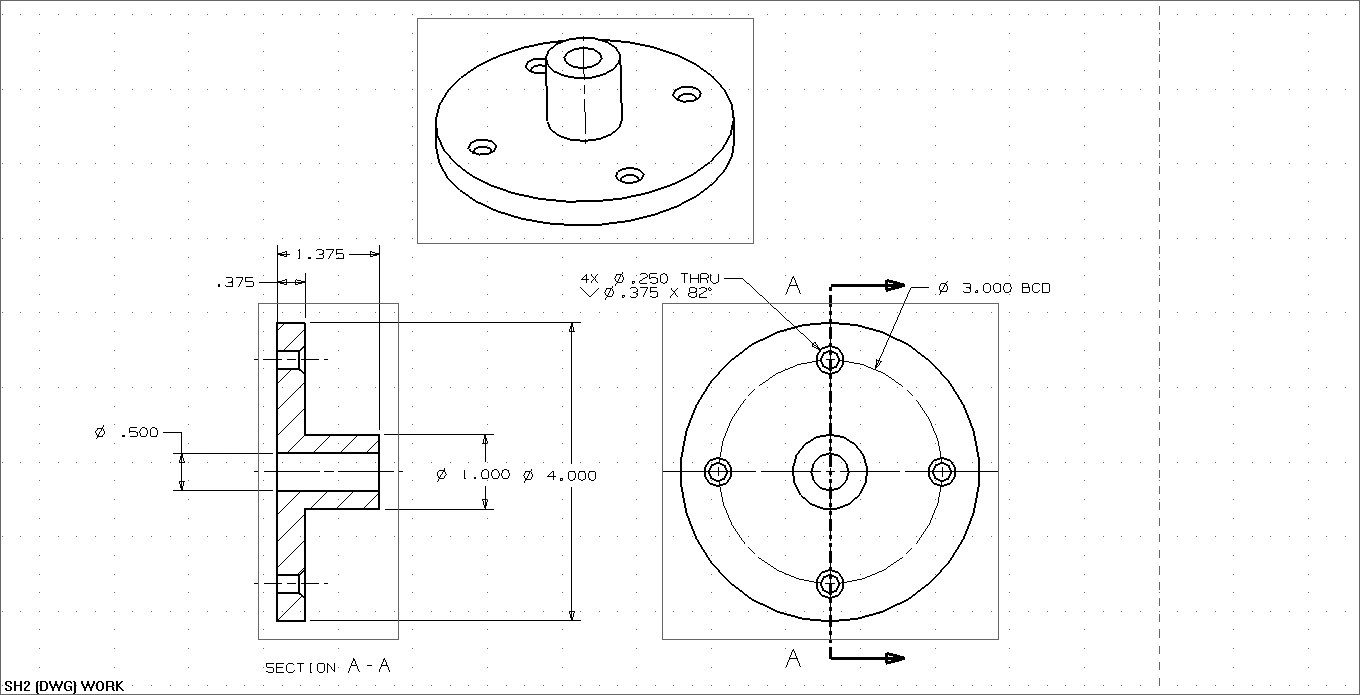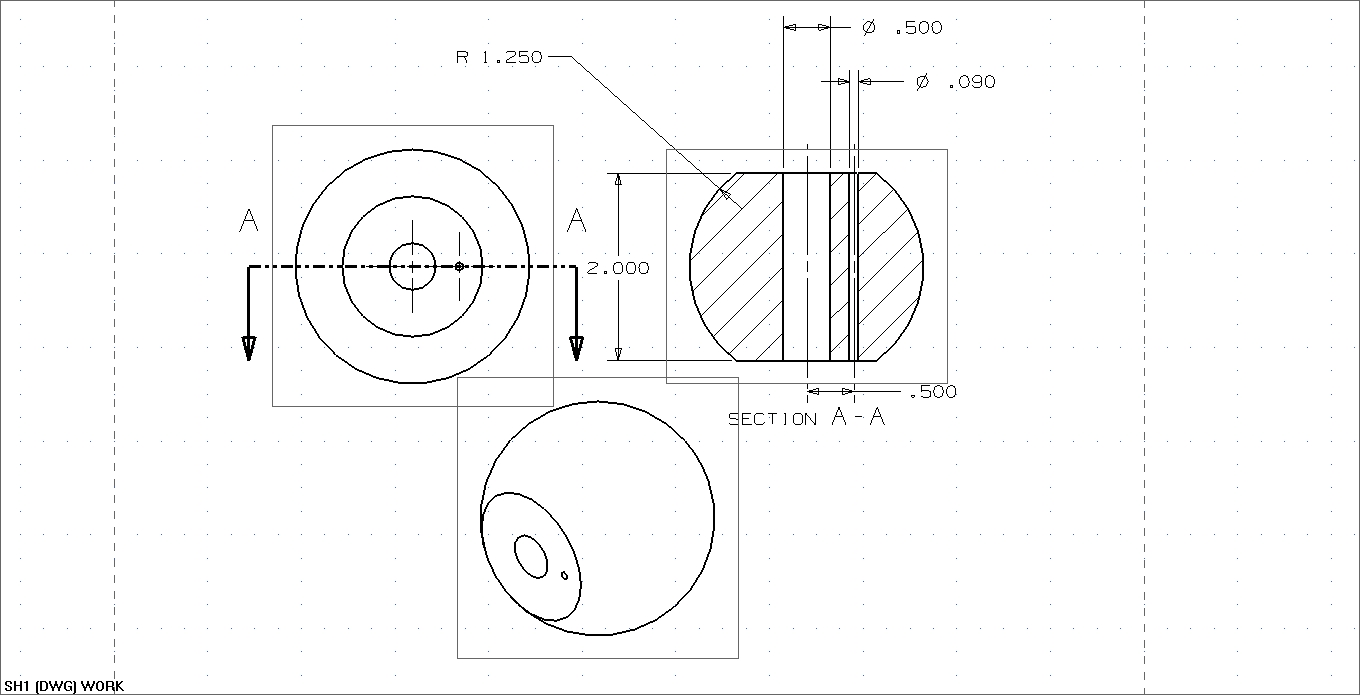Simple NX Parts
Below are a few simple parts. At this point you should be able to model these without too much help. There are somem pointers given. Always fully constrain the parts. Note that the parts are shown as engineering drawings. This is donefor two reasons. First, it is the easiest way to convey the geometry, and second, it is to start to get you familiar with the standards. I think that evey though we have not explicitly covered dimensioning you can figure out what is going on. If not ask myself or the TA or another student.
Block 1

- Start with a block primative.
- Then add the counterbore hole
- Next add a boss with a draft angle to create the "Asarco" stack
- Then add a simple hole in center of the boss you just made (use point on to point constraint to have it be centered)
- The little recess feature can be made with a pocket and then a pad feature. Use the line on line constraint to get the pad on teh back edge of the pocket.
Block 2

- Use either an extruded sketch or a block primative with a pad to create the base "tee" feature. You should be able to create this both ways. Think of some other ways in which you can create this base "tee" feature.
- Add the countersink holes.
- Create the slots. Try making one with the slot design feature and the second by using a sketch and an extruded subtraction. Which do you feel is better?
Pipe flange part

- Create the base flange part with a revolved sketch, as shown in one half of Section A-A. Use the sketch datum axis as your center of revolution and constraint your geometry to it. How else could you make this feature (cylinder, boss, and hole?)
- Add the countersink holes. How can you position them? Try using point on line combined with a distance from the center axis.
- Using help find out about the Instance Feature (Insert->Assocoative Copy->Instance). Try using a circular instance array to create the other three holes off a base c'sink hole. (CAST: Design -> Feature Modeling -> Instance Arrays, Threads (40 minutes) )
Bead

- See if you can do this with no help. Think of some different ways of modeling it before you start.
Go back to the BE 1205 Home Page



